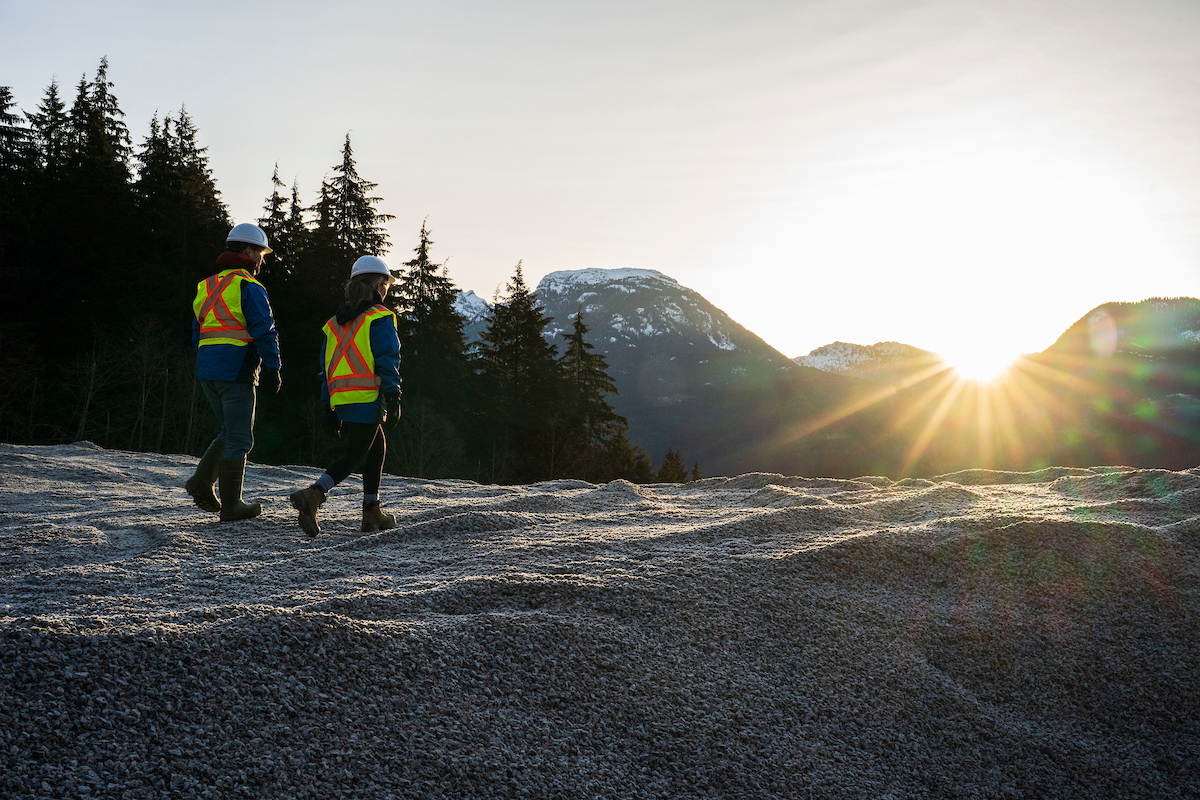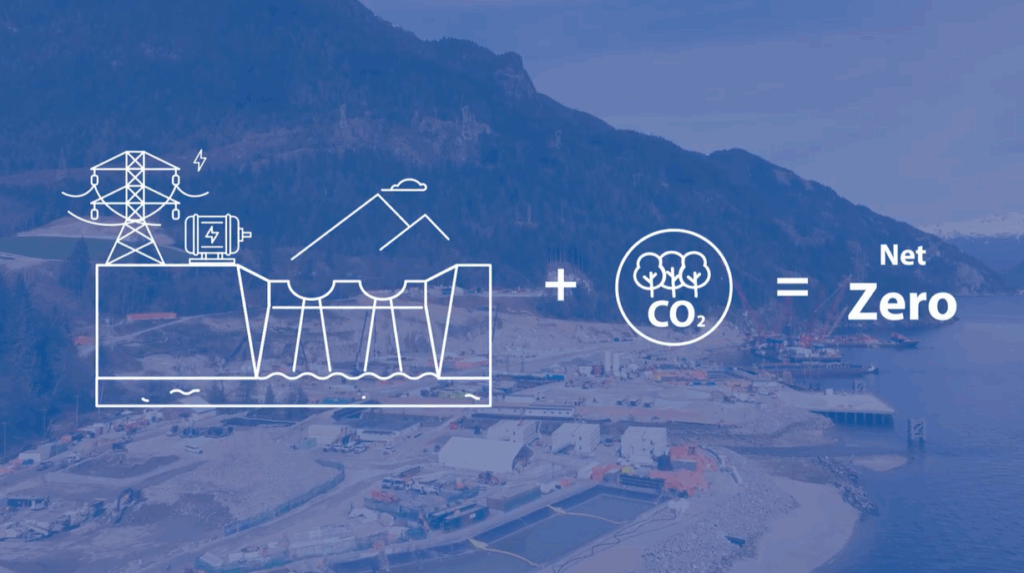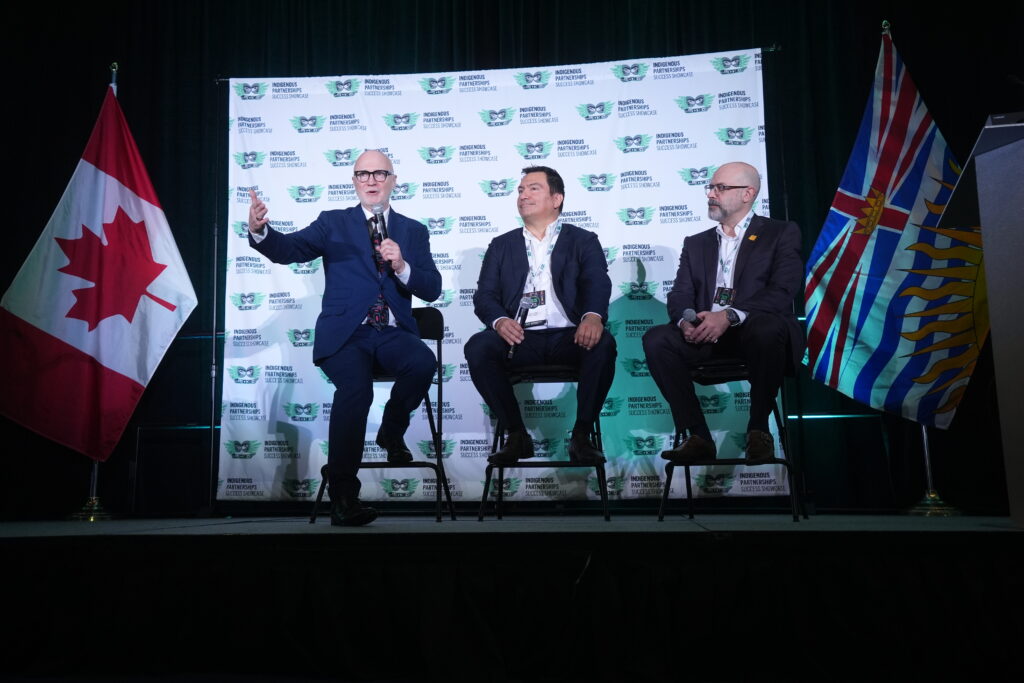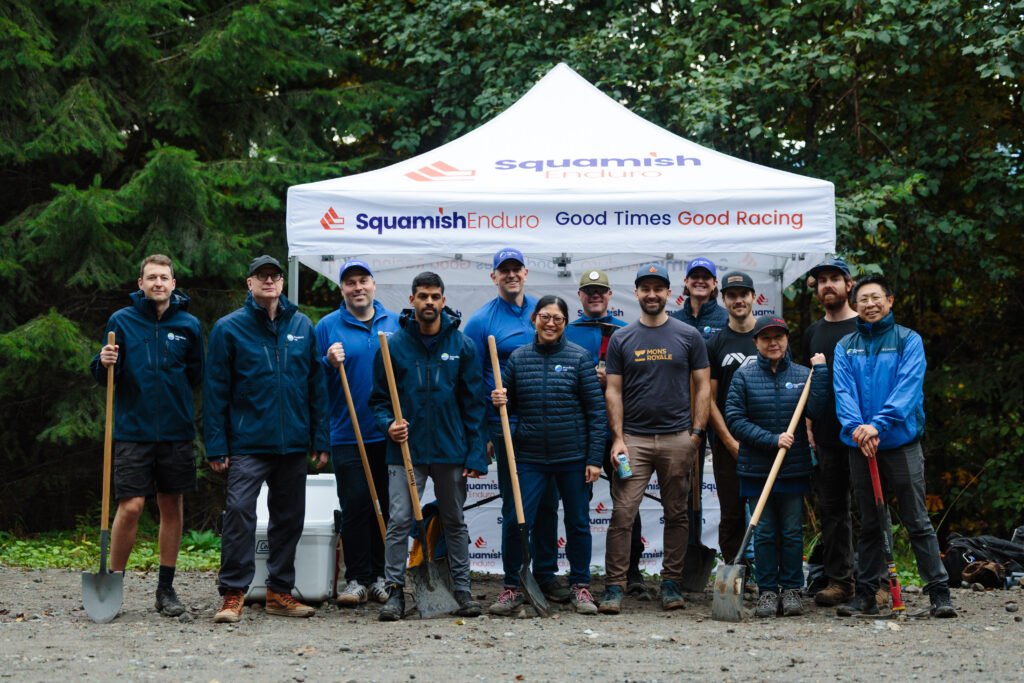News & Insights
Protecting Spawning Salmon During Construction
Oct 14, 2025
Every two years, pink salmon return from the ocean to the rivers and creeks of Átl’ḵa7tsem (Howe Sound) to spawn. After spending much of their lives in the open ocean, these fish make the journey back to the waters where they were born. It’s an event that feeds the ecosystem, sustains local traditions, and reminds us of Howe Sound’s ecological recovery after decades of decline.
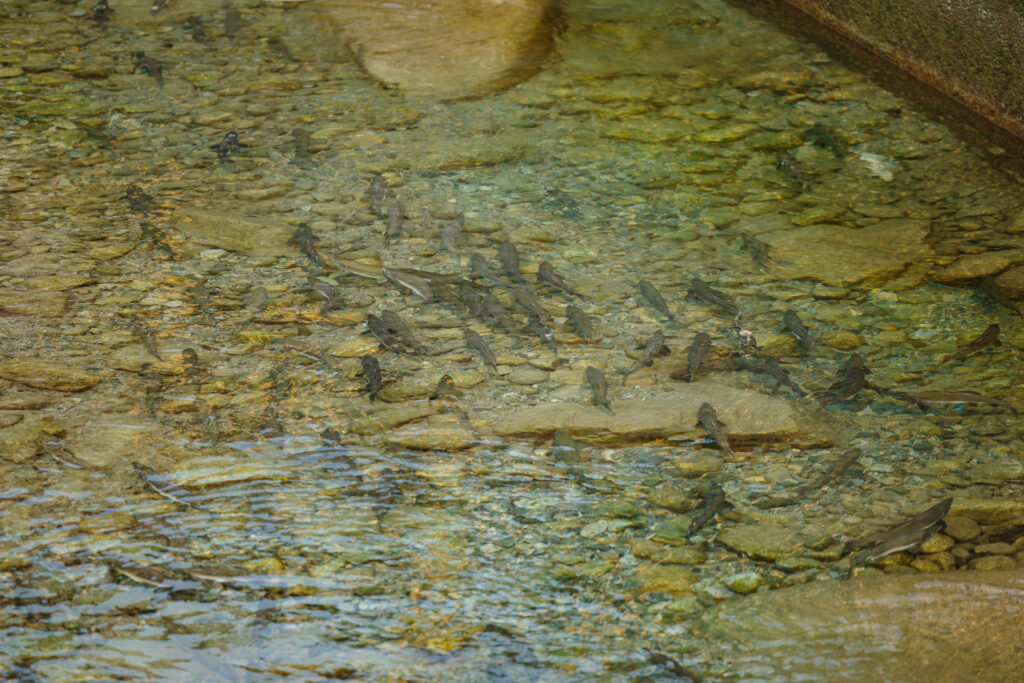
Woodfibre LNG is fortunate to be home to one of these salmon-bearing streams. Mill Creek, which runs through the centre of our site, is a salmon-bearing stream currently home to spawning pink salmon. Having a spawning ground on our site is both a privilege and a responsibility, underscoring the need to ensure construction activities are carefully managed to protect the fish and the habitat they depend on.
“Mill Creek is a daily reminder that our work happens within a living ecosystem,” said John Morgan, VP, Sustainability, for Pacific Energy, the parent company for Woodfibre LNG. “Every decision we make, from scheduling construction to monitoring water quality, must reflect that reality.”
Protecting Salmon During Construction
Safeguarding Mill Creek and the salmon that depend on it is central to how Woodfibre LNG plans and carries out construction. Because the salmon life cycle continues regardless of project timelines, work along the shoreline and near sensitive habitats is scheduled and managed to reduce potential impacts.
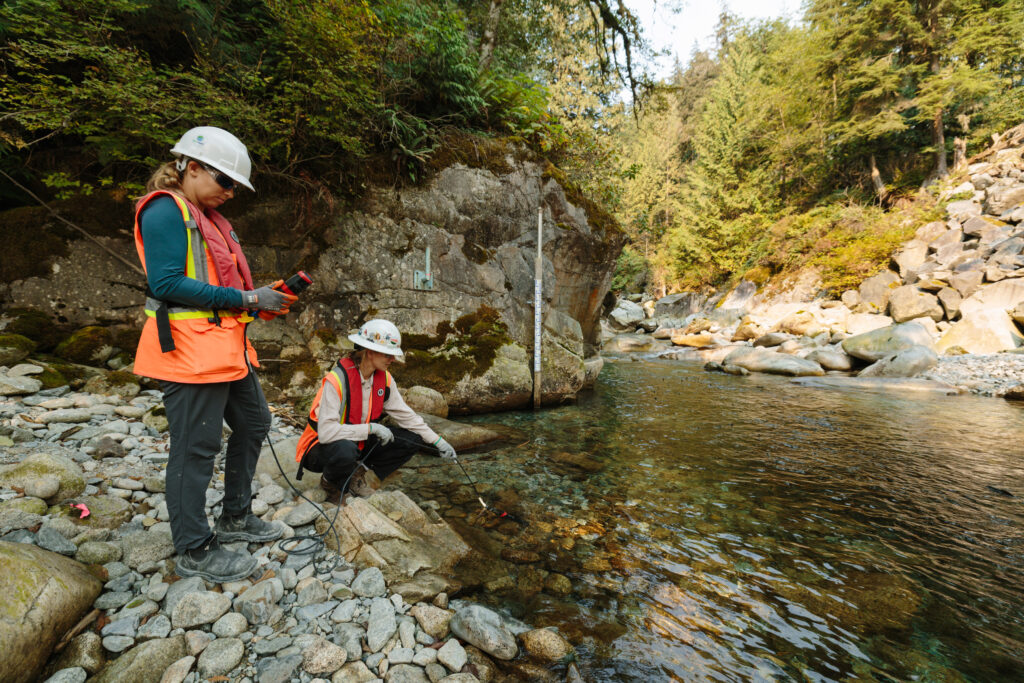
Key protections include:
- Continuous water quality monitoring
- Continuous underwater noise monitoring
- Careful scheduling and planning around salmon activity and sensitive life stages
- A fish and fish habitat effects monitoring program, including spawner and juvenile salmon emergence surveys
Together, these measures ensure that construction moves forward while giving salmon the space and conditions they need to complete their life cycle successfully. Protecting salmon during construction is not a single action but an ongoing process of planning, monitoring, and adapting. Protecting salmon habitat is part of how we build responsibly today and how we safeguard Howe Sound for generations to come.
Collaboration and Oversight
Protecting salmon during construction is not something Woodfibre LNG does in isolation. All plans are developed in close consultation with the Sḵwx̱wú7mesh Úxwumixw (Squamish Nation). Squamish Nation’s regulatory review and oversight are central to how environmental protections are designed and applied on site, ensuring measures respect both cultural priorities and ecological needs.
Oversight also extends through the provincial and federal governments. The BC Environmental Assessment Office (BCEAO) and Fisheries and Oceans Canada (DFO) play key roles in reviewing project activities, setting conditions, and monitoring compliance. Together with the Squamish Nation, these regulators ensure that construction practices meet the highest standards of environmental protection.
This framework of Indigenous, provincial, and federal oversight provides both accountability and transparency. It reinforces that the safeguards in place for salmon are not only project commitments but legal and cultural obligations.
Future Stewardship
“Our commitment doesn’t end when construction is complete,” Morgan added. “Long-term monitoring, restoration, and offsetting are built into this project so that Howe Sound’s salmon runs can continue to recover for generations to come.”
In addition to ongoing safeguards, the project includes restoration and offsetting commitments aimed at improving the ecological conditions of Woodfibre LNG project site and Howe Sound. These efforts focus on repairing habitat degraded by past industrial activity at the project site, enhancing fish habitat connectivity along the shoreline and creating refuge spaces for juvenile salmon.
These are practical steps that strengthen the salmon’s chances of survival. They also build on the success story of Howe Sound itself, where pink salmon have been steadily rebounding after years of decline — a sign of ecological renewal that deserves to be protected.
From planning and mitigation to oversight and restoration, these measures reflect a commitment to leave the environment in better condition than it was before. Future stewardship means meeting regulatory requirements while also supporting the long-term health of salmon runs and contributing to the continued recovery of Howe Sound.
The return of pink salmon to Átl’ḵa7tsem is a visible sign of recovery in Howe Sound. By combining careful construction planning, protective measures, regulatory oversight, and long-term restoration commitments, Woodfibre LNG is working to ensure that recovery continues alongside our work.
